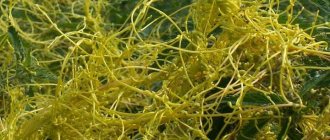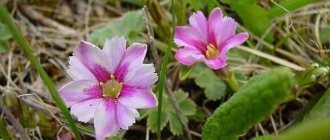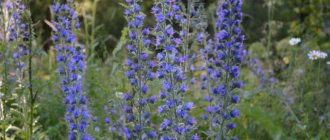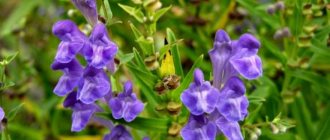Botanical description
This is a perennial plant, the rhizome grows over a wide area. The stems grow from 15 to 40 cm, in the spring they open 1 flower. Very wide leaves are identified by their yellowish-green color. Arranged crosswise.
May - July is suitable for collecting crow's eye grass, and August for berries.
In addition to the usual - raven's eye, there are other names:
- wolf eyes - according to the color of the fruit;
- cuckoo tears - due to plaque;
- bear berries - again reminiscent of the shape of the animal’s eyes;
- cross-grass - a cross grows crosswise.
It reproduces through seeds carried over long distances by wind and birds.
Crow's eye is a poisonous plant
Popular message topics
- Cherry tree
Cherry is a deciduous tree - a shrub with a height of 1.5 to 5 meters in height. Cherry is a stone fruit horticultural crop that first appeared on the Balkan Peninsula. - Boxing
One of the martial arts sports where athletes punch each other is called boxing. Martial arts are considered the most ancient combat, which dates back to 688 BC. Such first tournaments took place in Ancient Greece, - Chemistry in human life
How many schoolchildren sit until the morning reading chemistry textbooks, swearing at the whole world and not understanding why they need it. But once they understand how closely their lives are connected with this field of science, their interest awakens.
Chemical composition
Parastifin and paradine in their plant composition have a neurotoxic effect.
There are also useful elements:
- organic acids;
- coumarins – promote rapid blood thinning;
- flavonoids – strengthen the walls of blood vessels;
- pectins – preserve intestinal microflora;
- vitamin C;
- saponins - the structure resembles steroids.
Crow's eye contains neurotoxic poisons
Medicinal properties
Crow's eye grass is prohibited by doctors, but traditional healers paid attention to it.
The roots will cause severe intoxication; tinctures are made from the remaining parts. They are taken in accordance with the recommendations.
Useful properties of raven's eye:
- calms;
- eliminates spasms of various origins;
- relieves inflammation;
- diuretic;
- blood thinner;
- improves circulation in soft tissues;
- having a wound healing effect.
The berry and leaves act as a laxative on intestinal motility and cause vomiting. The decoction relieves the symptoms of fever.
In folk medicine, only the leaves and berries of the plant are used.
Indications for use
Effective in treating:
- tachycardia;
- hearing impairment;
- diseases of the throat and nose;
- swelling;
- mental disorders;
- hormonal imbalance.
Compliance with the recommendations is monitored by a homeopathic doctor. Independent use is strictly prohibited!
Homeopathic remedies are taken only under the supervision of a doctor
Contraindications
Crow's eye grass will not be beneficial:
- children of any age;
- pregnant women, during the postpartum period;
- hypertensive patients;
- for insomnia;
- in case of kidney diseases and allergic reactions.
Crow's eye is contraindicated for insomnia
Features of the plant
In nature, there are about twenty-six species of this grass. The plant contains the saponin paristifin, which is a deadly poison
. In addition, its berries and leaves contain organic acids, pectin, vitamin C, coumarin, and the rhizome contains various saponins and alkaloids.
Since raven's eye contains toxic substances, it is not used in official medical practice. This plant is used in homeopathy and also finds its use in folk medicine. In the Middle Ages, it was believed that the herb had the ability to ward off evil spells, for which purpose it was constantly worn on one’s person, especially during epidemics.
Despite the fact that the four-leaf raven eye is very poisonous, the active substances it contains produce a strong healing effect, in particular, they have the following effect on the body:
- antispasmodic;
- soothing;
- heal wounds;
- anti-inflammatory;
- improve intestinal and kidney function.
This plant is used in the treatment of neuralgia, tuberculosis, heart failure, ascites, laryngitis, and mental illness. Crow's eye, and especially fresh juice from it, restores vision, soothes neuralgic pain and migraines (lubricate the temples), and heals wounds.
Tincture for heart failure
Crow's eye can be infused with alcohol or vodka. For heart failure and edema:
- 10 berries (dry or fresh) are infused in half a liter of vodka for two weeks.
- Strain and take 20 drops in water three times a day.
The duration of the course is no more than those weeks, then a break of 10 days is needed. Dry herbs are also used for tincture (4 spoons per half liter of vodka, leave for 2 weeks).
For constipation and cramps
For tuberculosis, convulsions, constipation, every 2 hours take a tablespoon of this tincture (recipe above), diluted in the proportion of 2 teaspoons per glass of water.
For concussion
For a concussion, take 5 drops of this tincture (recipe above) diluted in water three times a day (course duration is up to two weeks).
Spreading
Common crow's eye grass is distributed throughout Russia - from Kamchatka to Crimea, except for the Far North. Everywhere - Europe, Belarus and Ukraine.
The Mediterranean, Asia and North America have an unfavorable climate for growth.
Six-leafed can be found by residents of the Far East in forests, slopes of ravines, along river banks - where sun exposure is minimal and the acidic environment is suitable.
Crow's Eye Berries
The berries are round in shape, no larger than 5 mm in diameter, black in color, and have a coating.
If you break it in half, you will see a lot of seeds; a specific smell can be felt several meters away.
You can distinguish these berries from similar ones by the following characteristics:
- blueberries are smaller in size and blue;
- blueberries grow in a dense carpet when the poisonous raven's eye is lonely;
- On a blueberry branch, a bunch of berries come into contact with the skin and leave marks. The raven's eye “throws out” one berry in the middle of the flower per season.
Crow's eye has a specific smell
Healing properties
As mentioned above, crow's eye is a toxic plant, but dried parts have some use in alternative medicine.
Pounded fruits are applied to difficult-to-heal abrasions, cuts, pimples and blackheads.
To get rid of headaches, folk healers advise rubbing the temples with the juice of this plant.
The Crow's Eye has:
- vitamin C;
- citric acid;
- malic acid;
- other organic acids;
- pectin substances;
- coumarin.
We recommend reading: How to make sea buckthorn jam
Thanks to these substances, the plant relieves cramps, calms the nerves, and heals wounds. It is also a diuretic and antiphlogistic agent. Alleviates the manifestations of tuberculosis, inflammation of the larynx, neuralgia, headaches and diseases that cause metabolic disorders.
Crow's eye has found its use as an aid for spasms, concussions, and heart problems. It is also used to stabilize heart function, improve digestion, and stimulate appetite.
Before consuming this plant in any form, be sure to consult your doctor.
Crow's eye poisoning
If you accidentally eat 2-3 fruits of the plant, just drink activated carbon. When 10 or more are swallowed, poisoning is inevitable.
During the preparation of decoctions, the poison does not disappear, so an increased dosage leads to serious consequences: damage to the heart and blood vessels, depression of the nervous system.
During the experiment of intra-arterial administration of berry infusion to the dog, they noticed how the heart rate changed - it slowed down, and then became faster. It is known that glycosides of lily of the valley, which belongs to the crow's eye genus, act in a similar way.
When several berries enter the body, activated charcoal is effective; in other cases, intensive detoxification and symptomatic therapy will be required.
Symptoms of poisoning
If you feel:
- nausea, vomiting;
- got sick, started to feel dizzy;
- suffers from heartburn, loose stools;
- fear of bright light, rapid heartbeat;
- unbearable pain in the abdomen, burning in the mouth;
- speech became slurred;
- poor coordination of movements.
At the first signs of crow poisoning, you should seek medical help.
First aid
Immediately drink a soda solution: stir 5 grams of soda or a large amount of liquid in a liter of water. Then you should take a product that neutralizes toxins - “Smecta”, “Polysorb”, “Enterosgel”, activated carbon.
Chicken egg white, sunflower oil and milk form a protective film - they must be eaten so that the poison does not have time to get into the tissues and blood.
Suck on pieces of ice to help cope with intoxication. If you have severe diarrhea, drink Regidron to avoid dehydration.
Mandatory medications for intoxication
Treatment of poisoning
When the poisoned person’s condition has eased a little, be sure to call emergency help. The doctor will offer pills that improve heart function. They will prescribe intravenous administration of a 5% glucose solution, hepatoprotectors, vitamins, and diuretics.
Treatment of poisoning is only comprehensive
Crow's eye - a poisonous plant (video)
In conclusion, it is worth noting the unique compatibility of very dangerous poisons and beneficial components of this plant, which allows it, along with its beautiful appearance, to be the center of attention not only of scientific medicine, but also to be in demand among herbalists.
What does a raven's eye look like?
Crow's eye is a perennial plant, the height of which is no more than 40 cm. The rhizome of the plant is creeping and very long. The straight and smooth stem does not have leaves at the bottom, but on its upper part there is a whorl consisting of four leaves. The leaves are oval or ovate, the ends of the leaves are pointed, the arrangement of the leaves is crosswise. On the peduncle there is a single apical flower of yellow-green color. The flower consists of 4 petals and 4 sepals.
The fruit of the plant is a black berry containing many seeds. Crow's eye begins to bloom in May and ends in June. The fruits ripen in late July - early August.
This poisonous plant can be seen almost throughout Europe, Western and Eastern Siberia, and the Caucasus. It grows in forests and forest-steppe zones, or more precisely, in broad-leaved and coniferous forests, in the middle of bushes. Crow's eye prefers moist and shady places.
Many have heard that crow's eye is a poisonous plant, but it is used as a medicine. The aerial part of the raven's eye is used to prepare tinctures and decoctions. You will be surprised, but even fresh, unripe berries are also collected and used as a medicinal product.
Beneficial properties of raven's eye
The rhizomes and berries of the crow's eye are very poisonous. The whole plant contains saponins, steroids, and the glycoside pyridine. The herb has been found to contain substances called flavonoids, and the herb also contains coumarins and vitamin C. The rhizomes are rich in alkaloids.
Crow's eye can only be used after consulting a doctor. A specialist will determine whether you really should take medications from this plant, and if so, in what doses. The plant has an anti-inflammatory, diuretic, sedative, antispasmodic and wound-healing effect on the human body.
Application of raven eye
In medicine, raven's eye is used unofficially, although there are medicines based on it that help people heal. There is one “but”: you can take raven eye preparations, but the dosage must be homeopathic and must be approved by a doctor. Preparations from the crow's eye are used for inflammation of the larynx, eye disease, neuralgia, and the juice from the fresh plant helps with loss of vision, bronchitis and drowsiness.
Tinctures and decoctions of crow's eye should be taken very carefully, do not forget that the plant is poisonous.
Crow's eye decoctions relieve spasms caused by nervous disorders and help with dropsy.
For metabolic disorders, laryngitis, and mental disorders, tincture of crow's eye prepared with alcohol helps.
Crow's eye herb tincture. Take 2 grams of fresh but crushed plant herbs and pour half a glass of 70% alcohol into them. Leave the composition to infuse for one week. Be sure to strain. Next, take a glass of water and dilute 1 tablespoon of the prepared tincture in it. If there are signs of nervous excitement, then you need to drink the tincture every 1.5 hours, but you should not drink more than 200 ml of the product per day.
Infusion from the collection. It is prepared in the following way. Take the same amount of crow's eye grass, blue cornflower, open arrow grass, meadow clover flowers, flowers and bird cherry. All these ingredients should be mixed thoroughly. Now you need to take 1 tablespoon of this mixture and pour 200 ml of boiling water over it, then leave for an hour. After infusion, it is necessary to strain the infusion. This product is used as a lotion for or.
Recipes for making raven eye remedies
Recipe No. 1. To prepare the tincture, take 2 grams of fresh, carefully crushed plant herbs, pour 70% alcohol (half a glass). The container should be closed and placed in a dark place for 7 days, then strain. The resulting product is taken diluted with water - 1 glass of water for 1 tablespoon of infusion. Dosage regimen: for nervous tics, dilute 2 tablespoons of the tincture of leaves, prepared according to the indicated recipe, in a glass of boiled water and drink 1 tablespoon every 2 hours during the day until the annoying tic under the eye or other similar twitching in the body goes away completely. Sometimes a few doses of medication are enough for the tic to go away.
Recipe No. 2. This medicine is prescribed by a doctor for a concussion. To prepare the tincture, you will need to take 4 cups of raw material (dried crow's eye herb) and add vodka (500 grams). The container must be closed and placed in a warm, dark place for 9 days, then strain. It is recommended to take the resulting tincture diluted with water - 5 drops of 50 grams of water - 2-3 times a day.
Crow's Eye Berries
Crow's eye berries ripen in July-August. The berries are highly poisonous; they are dangerous for both people and animals due to their content of paradine and paristifine. At the same time, they contain useful substances that have a healing effect on the human body.
Crow's eye berries, despite their toxicity, are used in folk medicine to treat, primarily, heart diseases (heart failure, tachycardia, and other diseases). In addition, berries are an effective remedy in the treatment of pulmonary tuberculosis, metabolic disorders, neuralgic diseases, etc. With the help of tinctures from these berries, laryngitis, sweating, and drowsiness are treated.
Recipe for making tincture. It is prescribed for heart failure (with edema). You need to take 10–12 fresh raven's eye berries, add vodka (500 grams), close the container, place in a dark place and leave for 15 days. Dosage regimen: for 1 dose, take 20–30 drops of tincture, dilute in 50 g of water, the number of doses is three per day. The course of treatment is 3 weeks. After a break of 10 days, if necessary, the course can be repeated.
This tincture is also recommended for diseases of the nervous system. It is recommended to take it according to the following scheme: dilute 1 tablespoon of tincture in a glass of water, it is important to drink 1 tablespoon every 1.5–2 hours. You should not take more than one glass per day!
Crow's eye is a poisonous plant
Crow's eye is a poisonous plant; substances such as paradine and paristifin have been identified in its composition. Crow's eye berries are dangerous for humans and animals when eaten. The leaves of the plant pose the least danger, and its berries pose the greatest danger. If you eat up to two berries, the body most likely will not react negatively to this product. With greater consumption, colic, dizziness are noted, the heart works differently (worse than before), difficulty breathing, paralysis. If the above signs are observed, then there is a fact of poisoning with a raven's eye.
Considering that the plant is known for its healing properties, it is recommended to carry out treatment only under the supervision of a doctor in order to avoid cases of poisoning. Crow's eye affects the organs of the gastrointestinal tract.
In case of poisoning, it is necessary to rinse the stomach from the poisons present, namely, give the poisoned person pieces of ice and let them hold them in their mouth (this is like an antidote). Anesthesin and some drug that will restore heart function, for example, strophanthin, must be administered inside.
Crow's eye flower
The crow's eye flower is single, located at the top of an erect stem. In the center of the flower there is an ovary ball, painted in a dark purple hue, from which extend eight narrow stamens, four narrow inconspicuous petals and four green sepals (the sepals are slightly larger in size than the petals). After the flowering process is completed, a rather large black-blue (blue-black) berry is formed from the ovary.
The flowering period of the crow's eye occurs in May-June. For traditional medicine, the flower of this plant is of no value, therefore it is not used in the formulation of infusions and decoctions. Like all other parts of the raven's eye, the flower is poisonous, so it should be handled with extreme caution.
Crow's eye four leaf
Crow's eye four-leaved is a perennial herbaceous plant of the Liliaceae family (some new sources place the plant in the Melanthiaceae family). The rhizome is long, creeping. Stem – single, erect; the lower part of the stem is bare (without leaves), in the upper part there is a whorl of 4 leaves (less often 3, 5 and 6). Leaves are oval or ovoid, entire, short-petiolate (sessile), arranged crosswise, pointed at the end; they are painted green.
The flower is solitary, inconspicuous, located in the upper part of the stem, star-shaped, colored yellow-green. In the center of the flower there is an ovary, from which, upon completion of flowering, a fruit is formed - a blue-black multi-seeded berry of a round shape. Four-leaved raven's eye blooms in May-June, bears fruit in July-August.
The natural distribution area of this species is almost everywhere throughout Europe (except for the arid southern regions), in Eastern and Western Siberia and the Caucasus. This plant grows mainly in deciduous and coniferous forests, in dense thickets of bushes, as well as in dark and damp places.
All parts of the plant are poisonous (berries and rhizomes are especially dangerous), but this has not become an obstacle for traditional healers who have been using the above-ground part of the plant (grass and berries) for a long time in the treatment of various diseases. The four-leaf raven's eye herb is harvested during the flowering period and is used for preparing infusions and tinctures, mainly in fresh form; The berries are harvested after ripening - in August.
Self-medication with medicinal infusions and tinctures of this type of plant can lead to undesirable consequences, therefore, before starting to use such medicines, consultation with your doctor is necessary.
Crow's eye four-leaf herb is used in the treatment of migraines, neuralgia, ascites, lungs, metabolic disorders and in cases of seizures. The berries are used for diseases of the cardiovascular system.
Contraindications to the use of raven's eye
All parts of the plant are poisonous, especially the berries and creeping rhizomes; for this reason, medicinal tinctures and infusions must be used with extreme caution, not exceeding the indicated dosage and only after consultation with your doctor. Crow's eye medications are not used during pregnancy, breastfeeding, children under 12 years of age, hypertension, etc.
Expert editor: Nina Vladimirovna Sokolova | Herbalist
Education: Diploma in General Medicine and Therapy received from the University named after N. I. Pirogov (2005 and 2006). Advanced training at the Department of Herbal Medicine at the Moscow People's Friendship University (2008).
Use of a poisonous plant
Crow's eye is not in the State Register of the Ministry of Health. Herbalists advise preparing healing products from the upper part of the plant. Nowadays, few people use this herb. If you still decide, take it in small portions, under the supervision of a specialist.
Collection, preparation and storage of poisonous plants
Herbs are collected in early summer. Wear thick clothing with sleeves, gloves and goggles to protect the skin and mucous membranes of the eyes - a minor burn is possible. The shoots cut with a knife are laid out in a thin layer in a dark, ventilated room. Store the finished herb in cloth bags, making a note about the contents.
The dried plant must be stored in such bags.
Folk recipes with raven's eye
an alcohol tincture from fresh leaves of the cross herb . Proportions: 50 g of leaves per 0.5 liter of vodka. Infuse for 20 days in a dark cabinet, then filter through cheesecloth. For prolonged neuroses, take 20 drops of tincture from the leaves in half a glass of water. Take it for two weeks, after which they take a break of the same duration.
An alcoholic tincture can also be made from the berries of the plant, and dry, fresh, and frozen are suitable. Take a 0.5 liter bottle of vodka and put a dozen berries in it. Insist for two weeks in the closet. For each dose, take 25 drops of tincture and dilute them in 50 g of water. To treat migraines, take three times a day for three weeks, then stop the course.
Cross-grass is used to prepare infusions and decoctions in combinations with other plants . For example, for the treatment of inflammatory eye diseases, a collection of equal parts is mixed:
- crow's eye grass, red clover, cornflower, open lumbago;
- meadow geranium flowers;
- bird cherry berries.
The components are crushed, mixed, separated 1 tbsp. spoon, pour boiling water and leave for an hour. Then they are filtered and used as lotions, soaking cotton pads in the infusion.
The raven eye is short and beautiful in its own way. Four leaves and only one berry - if you remember these identifying marks, it will be impossible to confuse it with edible berries. All the power and benefits of the plant are not in the taste, but in the combination of chemical compounds that official science has yet to put at the service of man.











